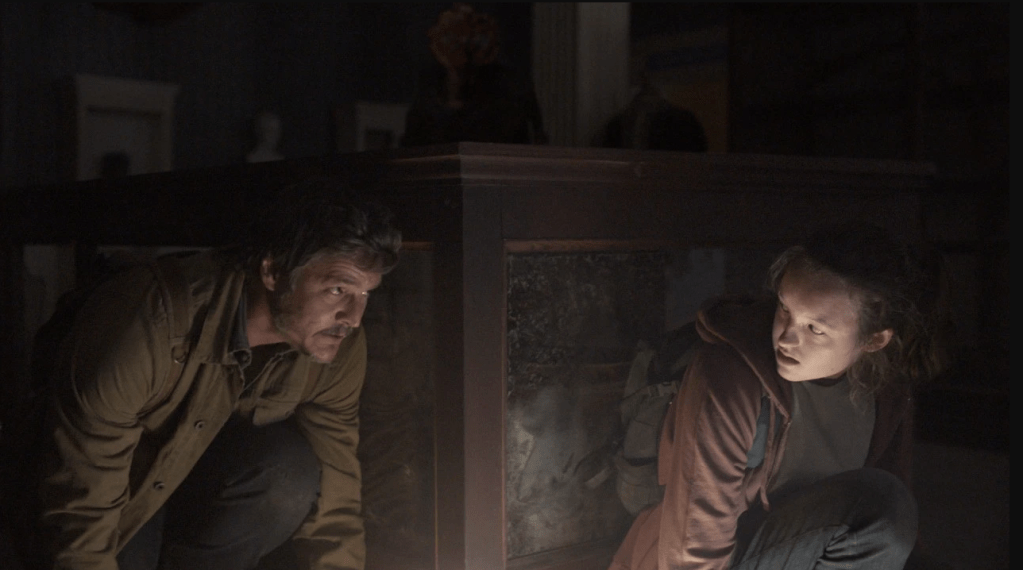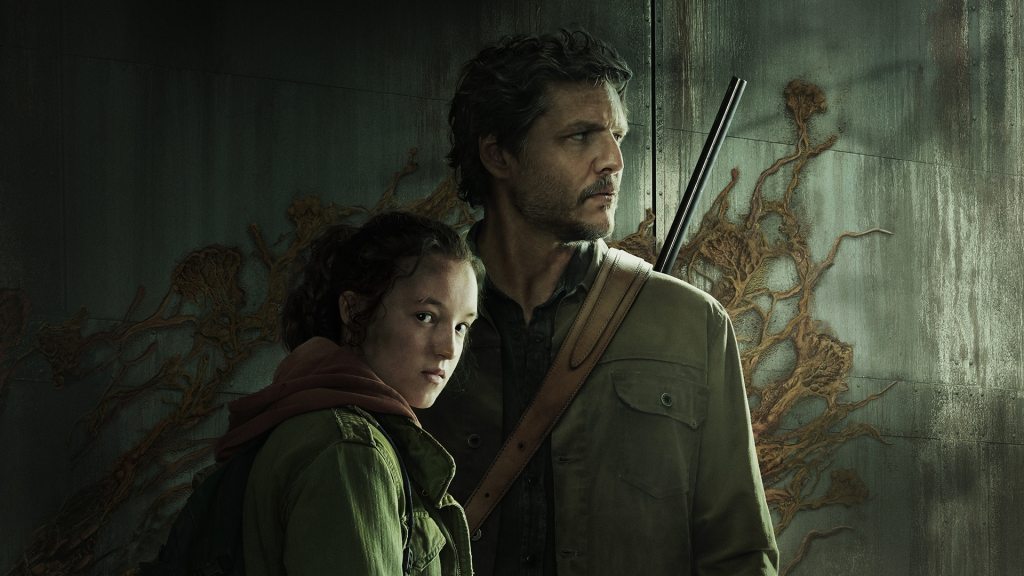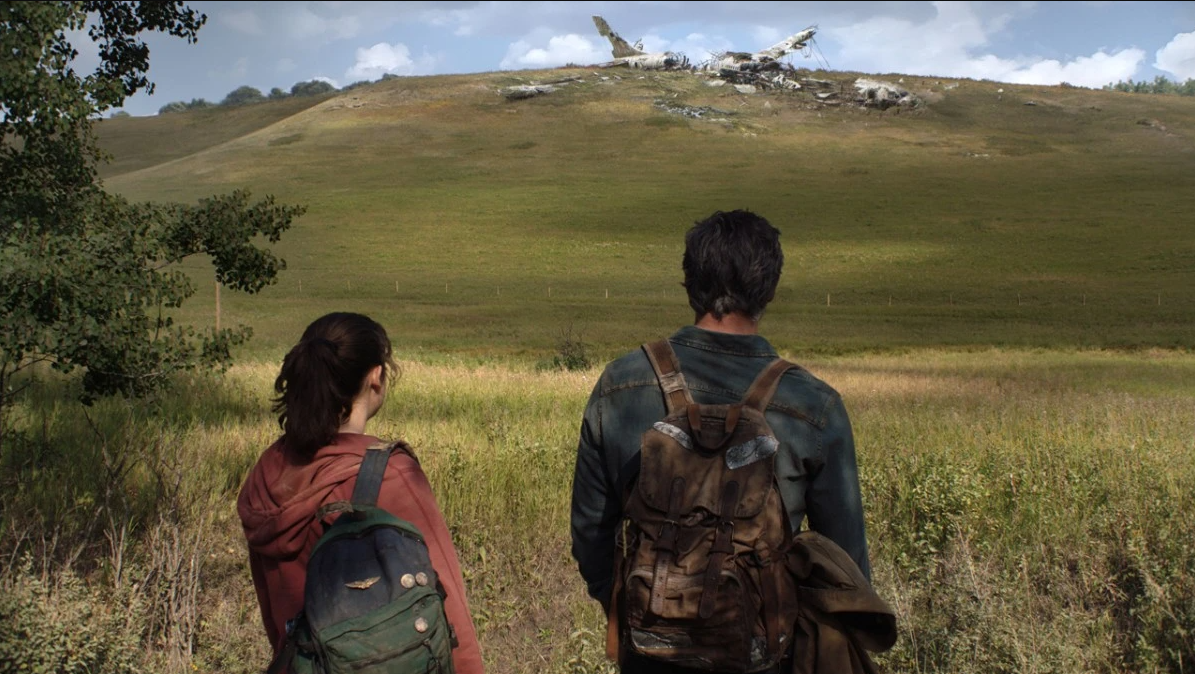It’s difficult to do a fresh take on the zombie story, especially in the height of a real-life pandemic. The Last Of Us, a high-concept adaptation of the acclaimed PlayStation game from 2013, takes a stab at it.
Creators Craig Mazin and Neil Druckmann have their work cut out: the sprinting zombie of the 21st century is starting to get tired, but the genre keeps shuffling on. These days, pandemics and apocalyptic crises are a matter of fact: the novelty is that it could happen to beautiful Americans. Still, a captivating cameo from John Hannah introduces our new twist: this time it’s not a virus or bacteria, but a fungal infection that plagues the globe with ghouls.
The shadow of terror looms large. The series opens in 2003, setting an apocalyptic trajectory from deep in Bush’s War on Terror. Protagonist Joel (Pedro Pascal) is a Desert Storm veteran. As the mysterious crisis emerges, his neighbours speculate over it being terrorists. After we’ve skipped to 2023, the terrorists are revealed to be a domestic group called Fireflies, who fight against the totalitarian military ‘protecting’ safe zones.
The story is poised to question whether each group – the grassroots Fireflies and the iron-fisted military – is as bad as the other. Hopefully as the series progresses it will avoid the game’s pitfalls there.
Read: Why is TV so much better than film at video game adaptations?
Dadman vs the zombies
The Last of Us follows a character arc I call ‘Dadman’. It’s a Hollywood staple that carries everything from Sharknado to Avatar: Way of the Water. Dadman is a father who has failed his family in some way. He didn’t go to sports games, or in tragic iterations, he couldn’t save his child’s life – Joel is both. But when a global-scale disaster strikes, there’s nobody better than Dadman to beat back the hordes of zombies/robots/sharks falling out of the sky. By saving the day, he redeems himself and his masculinity in the eyes of his children (or in the tragic cases, substitute children). Perhaps too many men taking screenwriting courses have been told to write what they know: if the chips were really down, the men would be home in a heartbeat.
Read: Avatar: The Way of Water review – thrilling action in Cameron’s unbeatable style
Joel is every bit the gruff gunslinger, but at least this incarnation has Pedro Pascal’s really sad brown eyes. Pascal is Hollywood’s hottest property for a reason, but so far the role hasn’t challenged him much beyond the physical. He briefly flexes a charming southern accent – and if you’re a Mandalorian fan it can be almost uncanny having a face to put to the voice. He is outrageously rugged, a deadly combination of superhero-muscular and sleep-rumpled. His hair is chalked grey and he’s wearing flannel: he’s sure to get the hashtag ‘daddy’ trending on a weekly basis.

This time around, the lone wolf’s cub is Ellie (Bella Ramsay). Ellie is a living Macguffin –the special thingamajig that the hero needs to carry on his journey. Ramsay isn’t quite as cute as Grogu (aka Baby Yoda), but they give the role some bite.
The story will ultimately hinge on Pascal and Ramsay’s chemistry, and guessing from previews and press, it looks like they’ll be brilliant together, but the plodding pilot episode gives us very little to get attached to.
It’ll grow on you
The show has done its genre homework: apart from the game itself, there are abundant shout-outs to 21st-century zombie horror. It’s taken the gore from Annihilation, the (sparing) scares from 28 Days Later, the cowboy stylings of The Walking Dead, a set from Train to Busan, and the spectacle from Cloverfield: but it doesn’t quite add up to anything of its own yet.
Being HBO, the beautiful opening titles are key to the motif: the gimmick here is fungus. The crawling of spores starts to resemble roads, cities, and eventually our heroes: perhaps the American Experiment is finally escaping its petri dish.

Read: Our colleagues at GamesHub gave The Last of Us 4 stars … who do you agree with?
At 120 minutes, the pilot plays like a short feature without much payoff: hopefully the pace picks up in later episodes. One major benefit is that the show is actually well-lit: Australians who want to keep abreast of the global online water-cooler discussion can easily watch this at midday in summer without needing to squint at a murky screen. But pacing-wise, it might be better to wait and binge.
Video games seldom adapt well to film or television. The fungus in Last of Us puppeteers the zombies to flail and attack with no will of their own, prompting a question: was Joel really so different, with a player behind the joystick? Well-written games utilise this problem of choice, entertaining the illusion that we’re in control of a narrative. On TV, that choice is forfeit from the get-go: we have no control – and really, we never did.
Reportedly exceeding $10 million an episode, it’s a lot of money for HBO spend on the trolley problem, but Pascal might be the only actor sympathetic enough to destroy the lever.
The Last of Us is currently streaming on Binge, with episodes released weekly.
Actors:
Director:
Format: Movie
Country:
Release:





